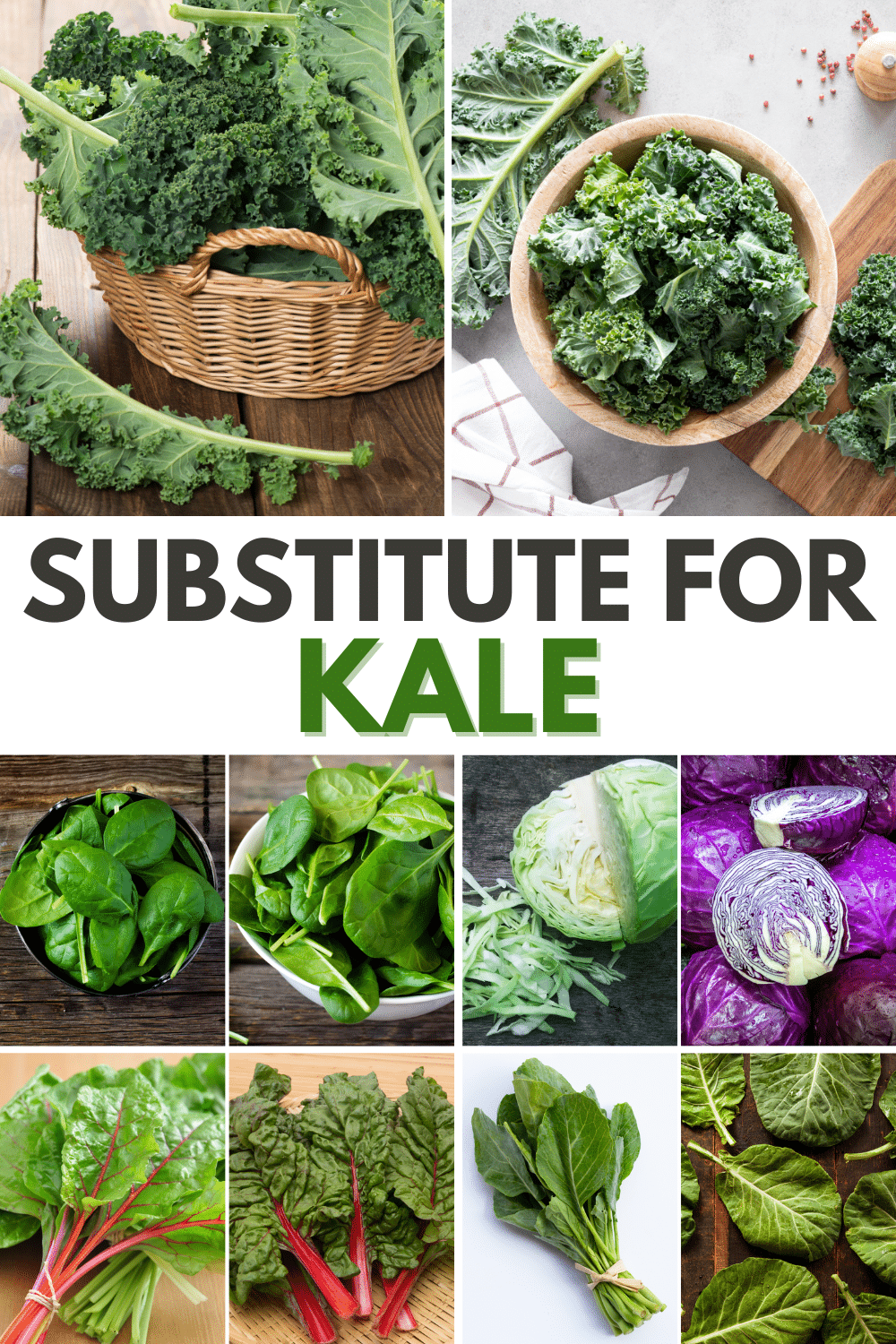Searching for a great substitute for kale without losing the healthy side of a recipe? You’re in the right place!
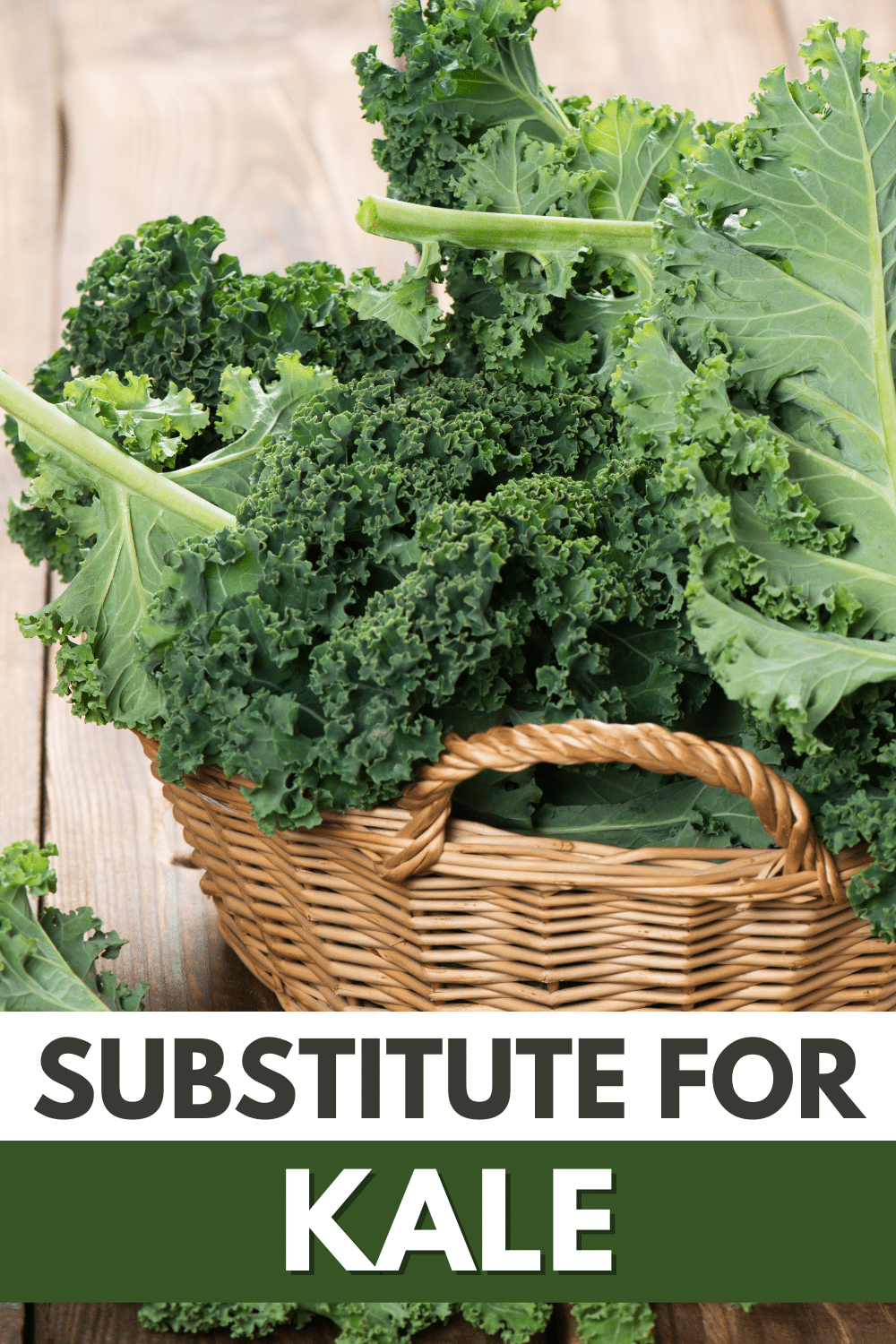
I, for one, am glad that kale’s popularity went beyond just a momentary culinary trend. It’s such a healthy vegetable that has earned the “superfood” title. Kale is also a versatile ingredient, and it’s a terrific ingredient in a wide array of recipes.
But there’s always a chance that you’ll need to find a good kale alternative, in case you can’t get your hands on any. So keep reading to discover some of the tastiest and healthiest kale substitutes for your favorite recipes!
Jump to:
What Is Kale and What Does It Taste Like?
Kale is a member of the Brassicaceae plant family, which makes it a relative of commonly used leafy green vegetables like cabbage, cauliflower, and broccoli. Unlike its cousins, kale doesn’t have a head part. This might also explain why kale is sometimes called “leaf cabbage.”
Despite being low in calories, kale is rich in vitamins, minerals, fibers, and antioxidants—no wonder it’s a well-known superfood. You’ll often find kale with dark green leaves, although it can also develop a nice purple hue.
In terms of taste, it has a rich, earthy flavor with a notable, yet pleasant hint of bitterness. You can mellow down kale’s bitterness by cooking it.
Some find that kale leaves are a bit too tough for their liking. But it’s quite an advantage because it allows kale to endure longer cooking times without easily getting mushy and soggy. You can even air-fry it to make delicious kale chips!
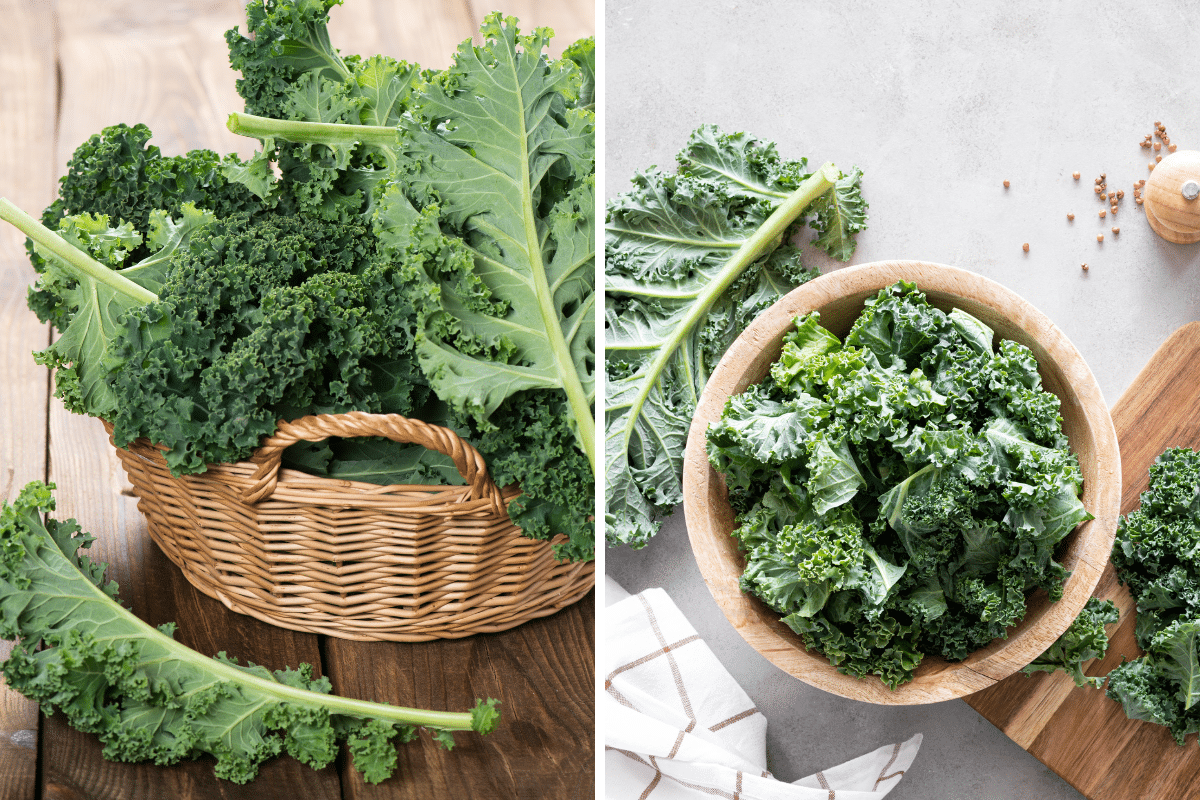
Reasons to Use a Substitute for Kale
Flavor and Texture Preferences
It would be amazing for everyone in the family to enjoy kale. But if someone is not a fan of its slightly bitter flavor, one of your best moves would be to find a healthy kale alternative with a milder taste.
Some people also find kale a bit more tough and fibrous than they would prefer. In this case, it would be extremely helpful to substitute kale with something with a more delicate texture.
Availability
Depending on where you live, you may have a harder time finding kale in markets and grocery stores. And if kale is not as easily available in your area, there’s a good chance it’s a tad pricier whenever it’s in stock.
Trying Seasonal Options
Many moms (myself included) love to tweak recipes to use seasonal ingredients. Vegetables taste more fresh and a bit sweeter during peak season. So it’s always fun to visit the farmer’s market and find seasonal vegetables to use as a substitute for kale.
Allergy and Other Health Restrictions
Kale allergy is not common, but it is not non-existent. If someone in your family happens to be allergic to kale, this is one of the times when using a healthy alternative is a must.
For those with kidney disease, the high potassium level in kale is to be avoided. With the kidneys not functioning correctly, like in the case of hyperkalemia, removing the extra potassium from the blood will be difficult, which can worsen the condition.
Developing Recipes
Feeling inspired and creative in the kitchen? Then, it’s the best time to bring out your favorite recipes that have kale and experiment with tasty alternatives!
Best Substitutes for Kale That Will Work for Your Healthy Recipes
Spinach
Looking for a kale substitute that has a more subtle taste and texture? Spinach is the answer. It has a milder “green” flavor than kale, which means it’s not as bitter. Its texture is also more delicate compared to the tougher, fibrous kale.
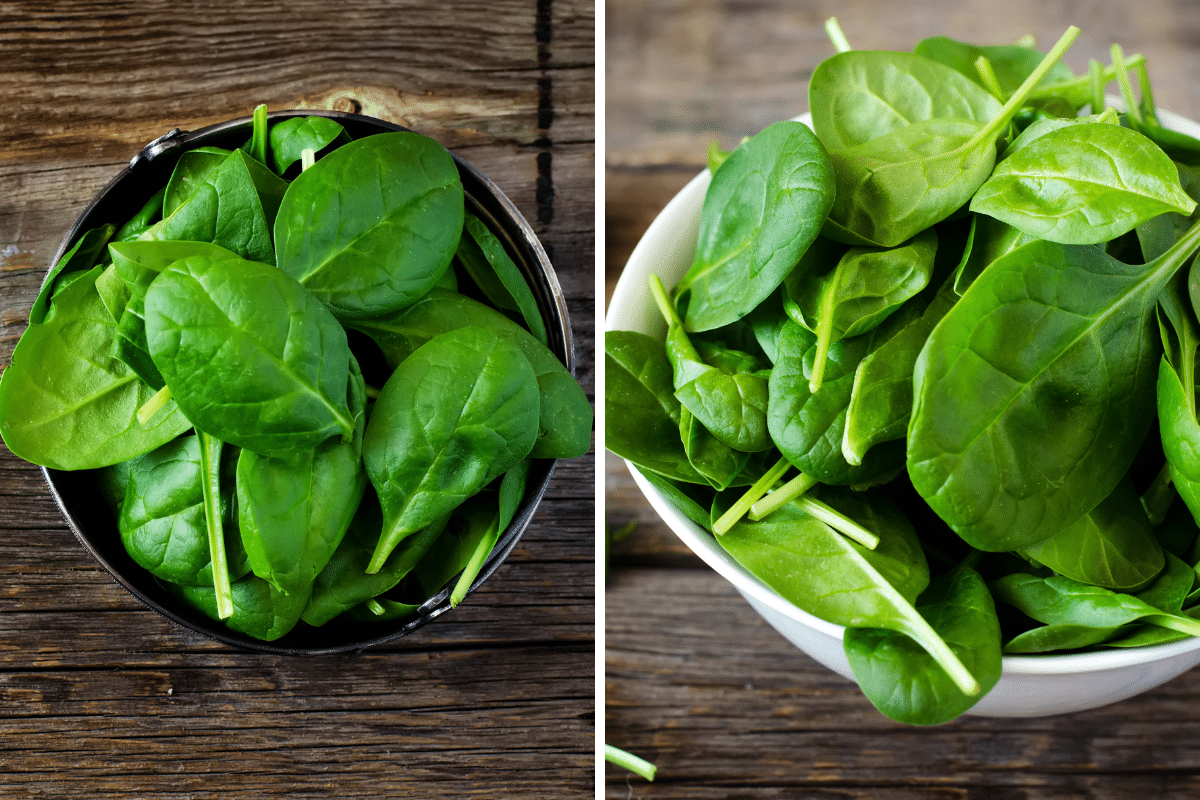
You can use spinach as a replacement for kale in just about any recipe, although using a specific type of spinach depends on the cooking method.
If the recipe calls for raw kale, such as summer salads, it’s best to use baby spinach. It’s more tender and milder in taste than most types of spinach. It also works great in smoothies if you don’t want an overpowering bitterness in your beverage.
Flat-leaf spinach, savoy spinach, or English spinach are best used in recipes where you cook kale. That goes for vegetable stir fry, soups, and curry dishes. These types of spinach have a richer flavor, which would also work great when making sauces.
Cabbage
This is the kale substitute you need if the bitterness of the original ingredient is a concern. Although cabbage slightly hints at a bitter taste, its sweeter flavor is more prominent. Red cabbage is also a better option if you want to add a subtle peppery taste to a recipe that calls for kale.
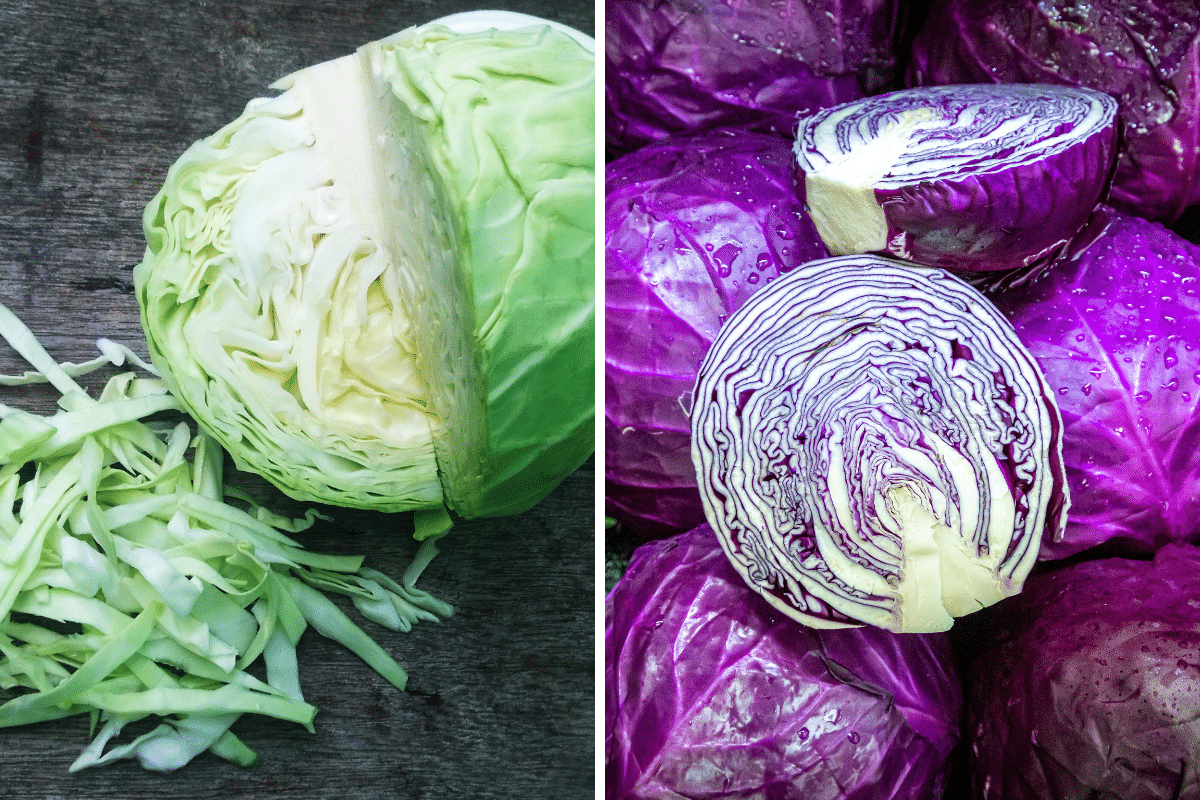
Cabbage also has a pleasantly crunchy texture yet is not as tough as kale, so it can be an excellent substitute for kale in salads and cold dishes. Cooked kale recipes like soups and stir fry dishes will also match the refreshing taste of cabbage.
Another thing to love about cabbage is it’s one of the easiest to find and most affordable vegetables out there.
Swiss Chard
Here’s another milder alternative to kale. Swiss chard is popular for its flavor, which has a perfect blend of earthy, sweet, and slightly bitter notes. Overall, it’s more delicate and pairs well with a wide range of recipes.
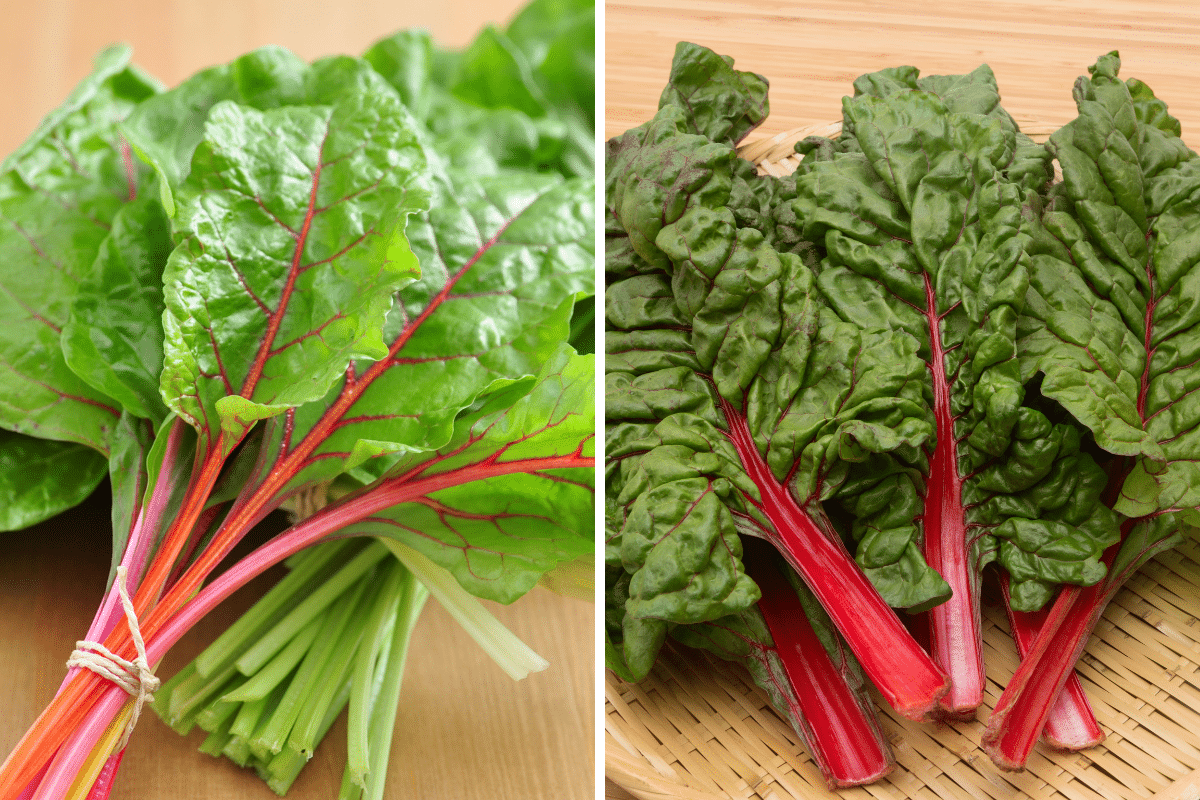
While Swiss chard leaves can be eaten raw, it’s much better to use them in recipes with cooked kale. Don’t worry, it doesn’t get mushy easily and can retain some of its crunchy texture after cooking. Just be careful not to overcook it.
The taste of Swiss chard goes well with salty and savory flavors, especially sharp-tasting cheeses. You’ll love replacing kale with Swiss chard leaves in pasta dishes or as a pizza topping!
You can also sauté Swiss chard leaves with herbs and aromatics to make an awesome side dish for roasted chicken and grilled meats. Remember that Swiss chard stems pack a stronger punch of flavor than kale, so you may want to reserve it for stews and soup.
Lettuce
Whether it’s iceberg or romaine lettuce, you can’t go wrong in replacing kale with this leafy green. However, iceberg lettuce is best used to replace kale in cold dishes. Its super crunchy texture goes well in fresh salads or as a healthy addition to savory meat sandwiches.
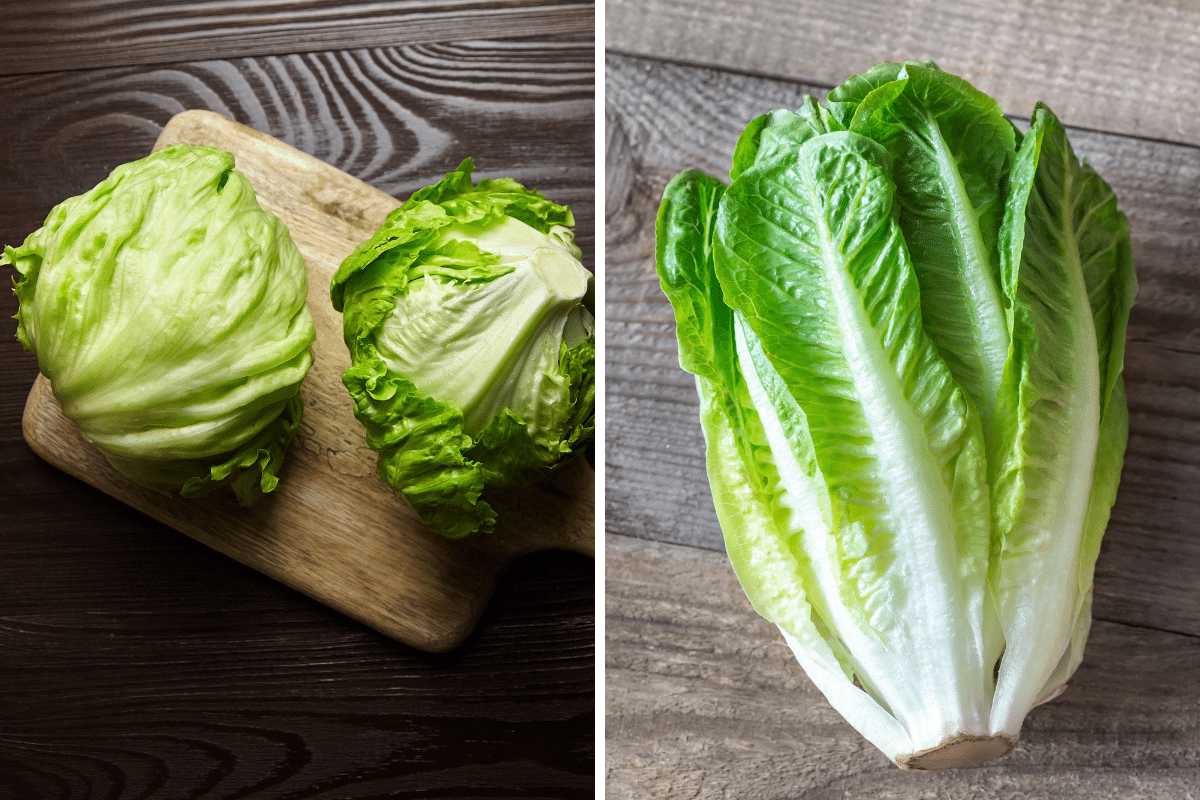
Romaine lettuce is a bit more flexible in the sense that it’s an amazing salad base but it’s also tasty when grilled or roasted.
Both iceberg and romaine lettuce can provide a noticeable hint of bitterness, but their overall flavors pale compared to the bitterness and earthiness of kale. You may have to add more seasoning to your sauces and salad dressings when using lettuce instead of kale.
Collard Greens
If the bitterness of kale doesn’t bother you, collard greens might be the best leafy greens to replace it. The flavor and texture of collard greens are the most similar to kale out of all the green vegetables on this list. Go ahead and use it in any recipe that calls for kale!
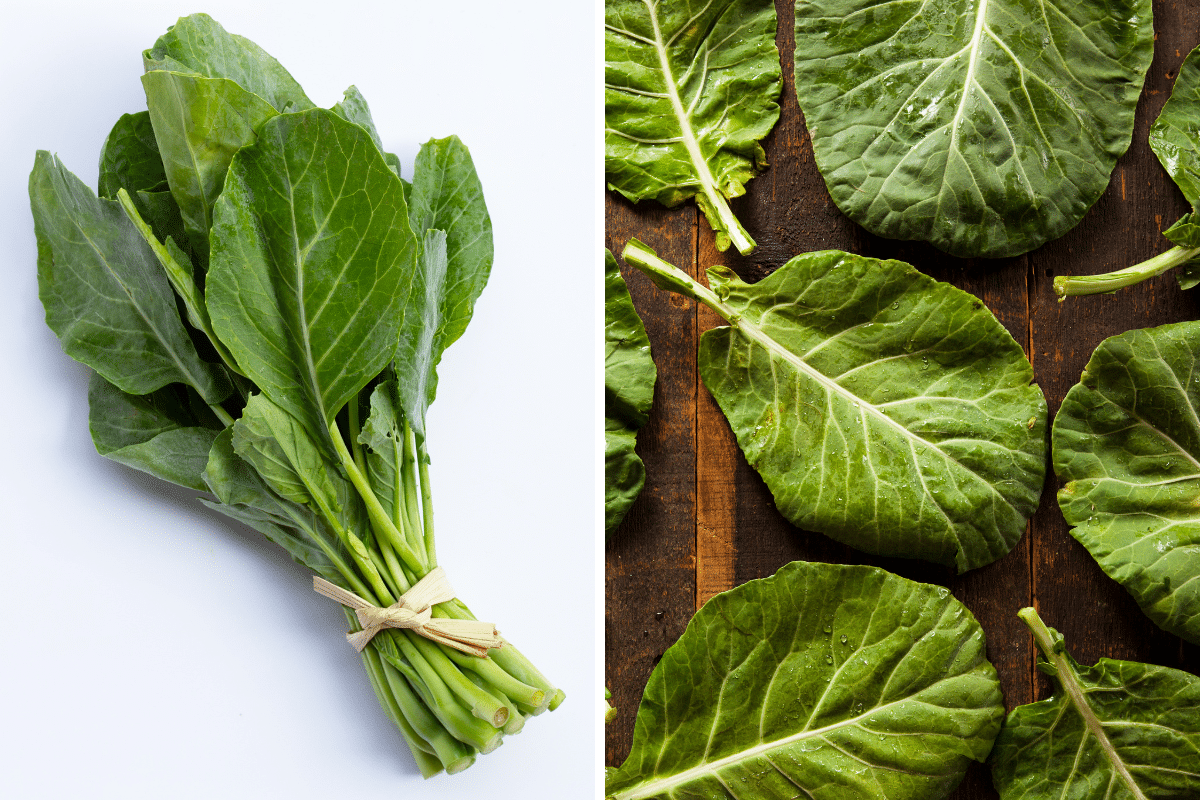
It goes well in soups, stews, sauces, and many recipes with kale. Collard greens can also endure a longer cooking time than most kale alternatives without getting mushy. You won’t miss the dark green color of kale with collard greens, so it’s also great for sandwiches, wraps, and cold salads.
Like kale, you can enjoy collard greens by sautéing them in olive oil with garlic and an acidic flavor like lemon or vinegar.
Helpful Tips When Using the Best Kale Substitutes
Whenever you’re using a substitute ingredient, always keep in mind how the alternative option’s flavor and texture compare with the real one. This will help you decide which kale substitute is best for certain recipes.
You may also need to adjust your recipe’s seasoning and cooking times depending on the flavor and texture of a kale alternative. Vegetables with a more delicate texture will likely require less cooking time than kale. Kale substitutes with milder tastes may also need more seasoning to elevate the overall flavor of a dish.
FAQs
This leafy vegetable is very rich in vitamin K, a nutrient heavily involved in blood clotting. Anyone taking blood thinning medications must ask their doctor about kale consumption to prevent potential drug interactions.
There’s research indicating that most cooking methods can reduce the total antioxidant and mineral contents of kale. However, cooking this leafy vegetable to lessen its bitter taste will not “remove” all its nutrients.
Eating raw kale or any leafy vegetable without washing it first is not advisable.
Dirt can accumulate in the leaves and stems from the time it’s harvested up until it arrives in stores.
Kale is also in the Environmental Working Group’s “Dirty Dozen” list of produce with high pesticide concentrations.
The best way to enjoy raw kale is by thoroughly washing every nook and cranny of its leaves and stems.
Substitute Kale With Tasty and Healthy Vegetables
Kale is one of the healthiest green leafy vegetables that can be enjoyed in more ways than just using it as a salad base. Yet, its tough texture and prominently bitter taste can be quite off-putting for some people. It will be a huge help to know some great alternatives for kale that will taste great in your recipes and are still healthy options.
Don’t want to run out of kale again in the future? Grow it in your vegetable garden, and you’ll be surprised how easy it is!

